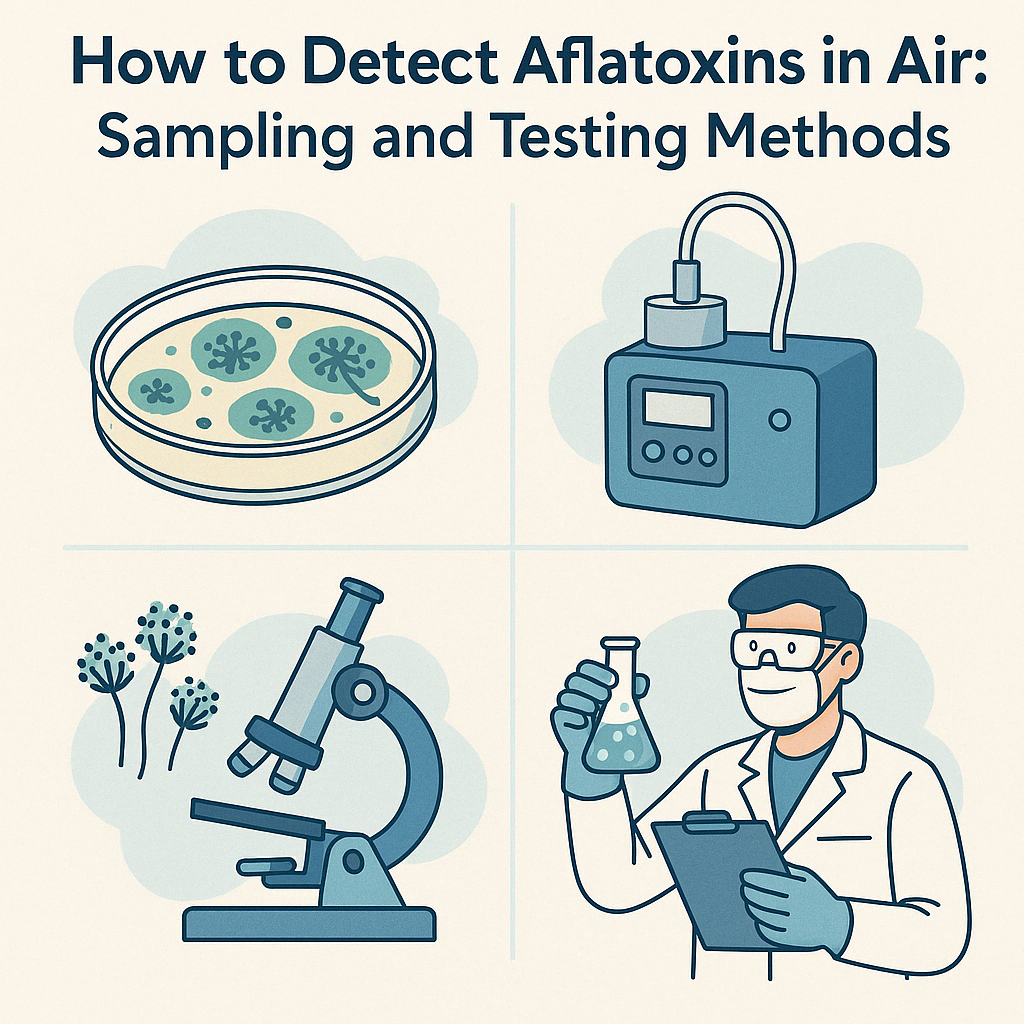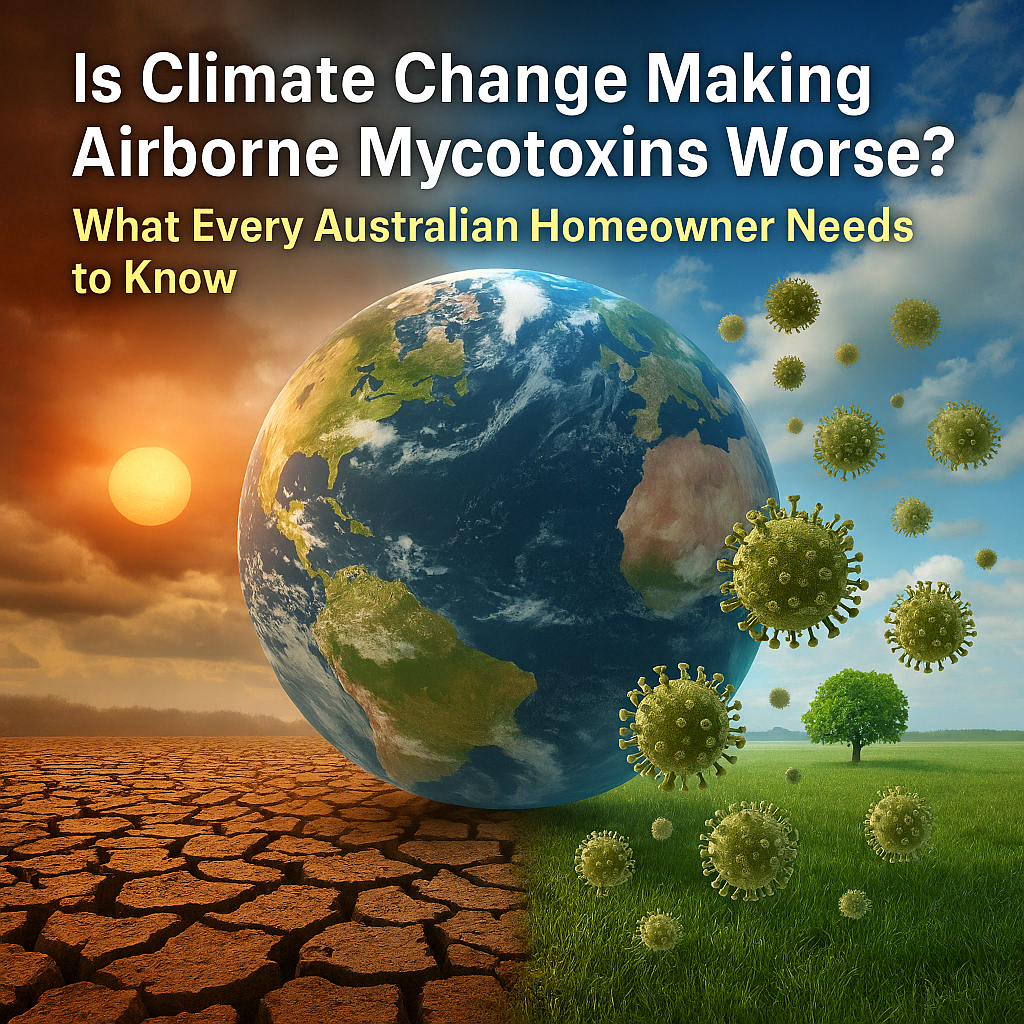
Are Invisible Aflatoxins Lurking in Your Home’s Air? Here’s How to Detect and Test for Them
Introduction
Mould is more than just an unsightly stain on your walls or ceiling—it’s a living organism that thrives in damp environments and can release harmful toxins. One of the most dangerous toxins produced by certain types of mould is aflatoxin, a type of airborne mycotoxin.
When left undetected, mould can infiltrate indoor spaces, affecting not only the structural integrity of homes and buildings but also the health of the people inside them. Renovation activities, leaks, and poor ventilation can all stir up spores and toxins—putting occupants at risk without them even knowing.
This is where The Mould Group steps in. As leading experts in mould detection and remediation, they specialise in identifying airborne threats like aflatoxins and creating safe environments for families, homeowners, renovators, and business owners across Australia.
What Are Aflatoxins and Why Are They Dangerous?
Aflatoxins are toxic compounds produced by certain types of mould, particularly species like Aspergillus flavus and Aspergillus parasiticus. These moulds typically thrive in warm, humid environments and can become airborne as spores.
Once airborne, aflatoxins can infiltrate indoor spaces, especially where ventilation is poor or moisture is trapped—like inside wall cavities, under floorboards, or in neglected cool rooms. Breathing in these toxins is a silent but serious health risk.
How Can Airborne Aflatoxins Affect Your Health?
Even at low levels, aflatoxins in the air can impact respiratory and immune health. Exposure over time may lead to symptoms such as:
Chronic coughing and wheezing
Headaches and sinus issues
Fatigue and brain fog
Allergic reactions and rashes
In severe cases or long-term exposure, aflatoxins have been linked to liver damage and even cancer. For children, the elderly, and those with existing respiratory conditions, the risks are significantly higher.
What Environmental Conditions Lead to Aflatoxin Exposure?
Mould doesn’t need much to grow—just a bit of moisture, warmth, and organic material. Here are common causes in homes and buildings:
Water damage from floods, leaky roofs, or burst pipes
Inadequate ventilation in bathrooms, laundries, or basements
Neglected cool rooms in restaurants and food storage areas
Condensation issues caused by poor insulation
Once established, these moulds can produce aflatoxins that become airborne during cleaning, renovation, or even just regular air circulation.
How Can You Test for Airborne Aflatoxins in Your Home?
There are several professional sampling and testing methods used to detect aflatoxins in air:
Air Sampling Pumps: These devices collect airborne particles on filters over a set time, which are then analysed in a lab for aflatoxin presence.
Spore Traps: These capture airborne spores, allowing experts to identify the mould species responsible for aflatoxin production.
Dust Sampling: Settled dust in the home can be collected and tested for aflatoxins and other mycotoxins.
Immunoassay Testing: A laboratory method that uses antibodies to detect aflatoxins with high accuracy.
High-Performance Liquid Chromatography (HPLC): This precise test identifies specific mycotoxin levels present in air samples.
The Mould Group uses advanced detection technologies to ensure thorough testing and accurate results—giving homeowners peace of mind.
What Are the Best Ways to Remove Airborne Aflatoxins?
Once aflatoxins are detected, removal must be swift and thorough. Here are proven remediation methods:
HEPA Filtration Systems: These capture fine particles, including mycotoxins, from the air.
Air Scrubbers: Industrial-grade machines that clean indoor air during and after remediation.
Safe Removal of Contaminated Materials: Items like plaster, carpet, and insulation may need replacing.
Anti-fungal Treatments: Applied to surfaces to stop future mould growth.
Dehumidification: Reducing moisture prevents future mould proliferation.
Only trained professionals should carry out remediation to avoid disturbing mould and worsening contamination.
How Can You Prevent Aflatoxin Contamination?
Prevention is always better than cure. Here’s how to stop aflatoxins before they start:
Fix leaks quickly and monitor plumbing
Ensure good airflow with fans and open windows
Use dehumidifiers in damp-prone rooms
Clean cool rooms regularly, especially in Sydney’s humid climate
Inspect insulation and wall linings for hidden mould after flooding or renovations
Routine checks, especially after storms or wet seasons, can prevent major issues down the track.
Who Is Most at Risk from Airborne Aflatoxins?
While aflatoxins can affect anyone, some groups are more vulnerable:
Children and babies with developing lungs
Elderly residents with weaker immune systems
People with asthma or allergies
Renovators and tradespeople who disturb old mould
Hospital and aged care residents with pre-existing conditions
If you or your family fall into one of these groups, regular mould inspections are essential.
Why Is It Important to Know the Difference Between a Mould Test and a Full Inspection?
As we explored in [Mould Testing vs Full Inspection: What’s the Cost Difference in Brisbane?], not all tests offer the same insights. While quick DIY kits may show surface mould, they won’t detect airborne aflatoxins or hidden structural damage.
A full inspection with The Mould Group includes:
Thermal imaging
Moisture mapping
Air and surface sampling
Structural assessments
It’s a smart investment that can save thousands in future repair bills and safeguard your family’s health.
If you suspect airborne mycotoxins in your home, don’t wait.
Contact The Mould Group today for expert testing and remediation.
🔗 Visit us on Facebook for more updates, tips, and real-life case studies: The Mould Group Facebook Page
📝 Next blog in this series:
Personal Protection and Ventilation: Reducing Inhalation Risks
Recent Post
Emerging Research
Are Airborne Aflatoxins More Dangerous Than We Thought? Emerging Research Reveals the Unknowns Introduction Mould is not just a cosmetic nuisance. It’s a living organism that, when left unchecked, releases toxic by-products into your environment. One of the most concerning of these by-products is aflatoxin—a dangerous type of airborne mycotoxin. While we know that ingesting […]
Climate Change and Airborne Mycotoxins
Is Climate Change Making Airborne Mycotoxins Worse? What Every Australian Homeowner Needs to Know Introduction Mould is more than just an unsightly problem—it’s a biological hazard that can compromise your health and damage your property. As it grows, it can release dangerous toxins into the air called mycotoxins. When these mycotoxins become airborne, they can […]
Airborne Aflatoxins and Animals
Are Your Pets or Livestock at Risk? Understanding Airborne Aflatoxins and Animals Introduction Mould is not just a concern for homes and people—it also poses a serious threat to animals. When mould spreads in barns, sheds, feed storage areas, or even inside homes, it can release aflatoxins—a dangerous type of airborne mycotoxin. These toxins can […]




